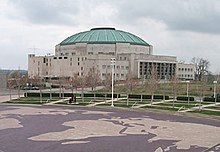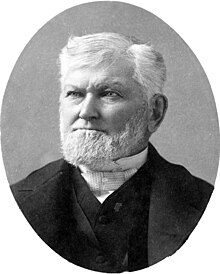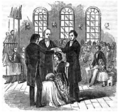|
Welcome to the portal of The Latter Day Saint movement
Introduction The Latter Day Saint movement (also called the LDS movement, LDS restorationist movement, or Smith–Rigdon movement) is the collection of independent church groups that trace their origins to a Christian Restorationist movement founded by Joseph Smith in the late 1820s. Collectively, these churches have over 17 million nominal members, including over 17 million belonging to the Church of Jesus Christ of Latter-day Saints (LDS Church), 250,000 in the Community of Christ, and several other denominations with memberships generally ranging in the thousands of members. The predominant theology of the churches in the movement is Mormonism, which sees itself as restoring again on Earth the early Christian church; their members are most commonly known as Mormons, though the LDS Church now rejects the use of that name. An additional doctrine of the church allows for prophets to receive and publish modern-day revelations. A minority of Latter Day Saint adherents, such as members of Community of Christ, have been influenced by Protestant theologies while maintaining certain distinctive beliefs and practices including continuing revelation, an open canon of scripture and building temples. Other groups include the Remnant Church of Jesus Christ of Latter Day Saints, which supports lineal succession of leadership from Smith's descendants, and the more controversial Fundamentalist Church of Jesus Christ of Latter-Day Saints, which defends the practice of polygamy. (Full article...) General images -The following are images from various Latter Day Saint movement-related articles on Wikipedia.
Selected articleNo Man Knows My History: The Life of Joseph Smith is a 1945 book by Fawn M. Brodie that was one of the first significant non-hagiographic biographies of Joseph Smith, the progenitor of the Latter Day Saint movement. No Man Knows My History was influential in the development of Mormon history as a scholarly field. However, scholars have since criticized the book for its methodological deficiencies, factual errors, and overt hostility to Smith. No Man Knows My History has never been out of print, and 60 years after its first publication, its publisher, Alfred A. Knopf, continues to sell about a thousand copies annually. For a revised edition released in 1971, Brodie added a supplement incorporating psychohistorical commentary. In 1995, Utah State University (USU) marked the 50th anniversary of the book's first publication by hosting a symposium to re-examine the book, its author, and her methods, and in 1996 USU published the symposium papers as a book of essays. (Full article...)Selected location
Selected schismatic histories
The Fundamentalist Church of Jesus Christ of Latter-Day Saints (abbreviated to FLDS and not to be confused with the Church of Jesus Christ of Latter-day Saints) is a religious sect of the fundamentalist Mormon denominations whose members practice polygamy. It is variously defined as a cult, a sect, or a new religious movement. (Full article...)
OutlinesRelated portalsKey biographies Otto Fetting (November 20, 1871 – January 30, 1933) was an American realtor and editor from Port Huron, Michigan who served first as a pastor and evangelist in the Reorganized Church of Jesus Christ of Latter Day Saints, and then later as an apostle in the Church of Christ (Temple Lot), commonly referred to as the "Hedrickites". Fetting claimed to have been visited by John the Baptist thirty or more times between February 4, 1927 and his death on January 30, 1933. Fetting was reportedly given instruction concerning the doctrine and practices of Hedrickites and other factions of Christianity, together with directives to begin construction of a temple on the Temple Lot, including its exact dimensions. After initially accepting his first eleven revelations, a Hedrickite conference vote in early October 1929 rejected a key portion of Fetting's twelfth message, leading him to found the "Church of Jesus Christ" on April 8, 1930. This breakaway faction, later referred to as "Church of Christ", subsequently gave birth to additional rival factions after Fetting's death, which have still further subdivided. These "Fettingite" or "Dravesite" (named after W.A. Draves, a follower of Fetting) factions include: the Church of Christ "With the Elijah Message" Established Anew 1929; the Church of Christ (Restored); the Church of Christ (Assured Way); and the Church of Christ at Halley's Bluff. (Full article...)
Selected image The Mesoamerican setting of the Limited geography model.
Did you know (auto generated)
Selected Anniversaries
Selected quote
TopicsFeatured contentCategoriesWikiProjectsAssociated WikimediaThe following Wikimedia Foundation sister projects provide more on this subject:
Discover Wikipedia using portals | ||||||||||





































